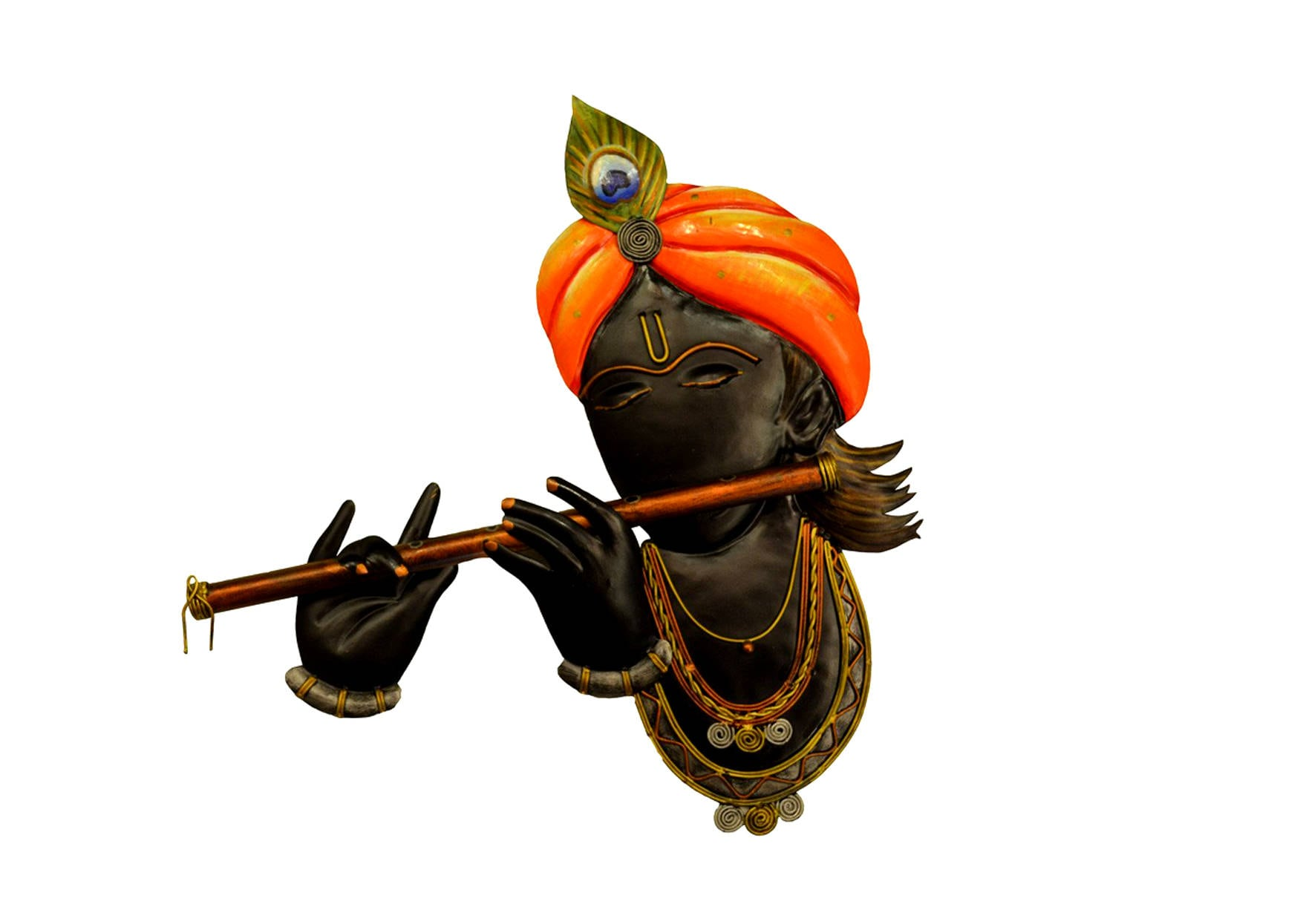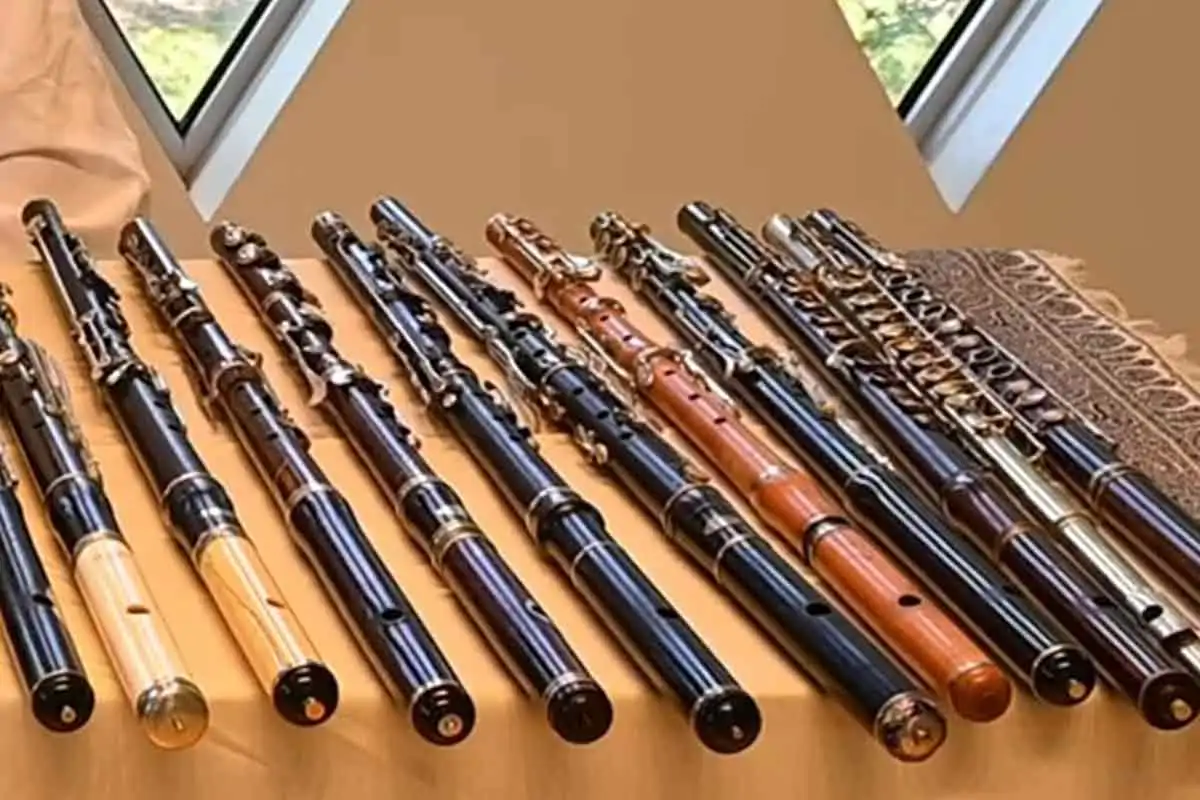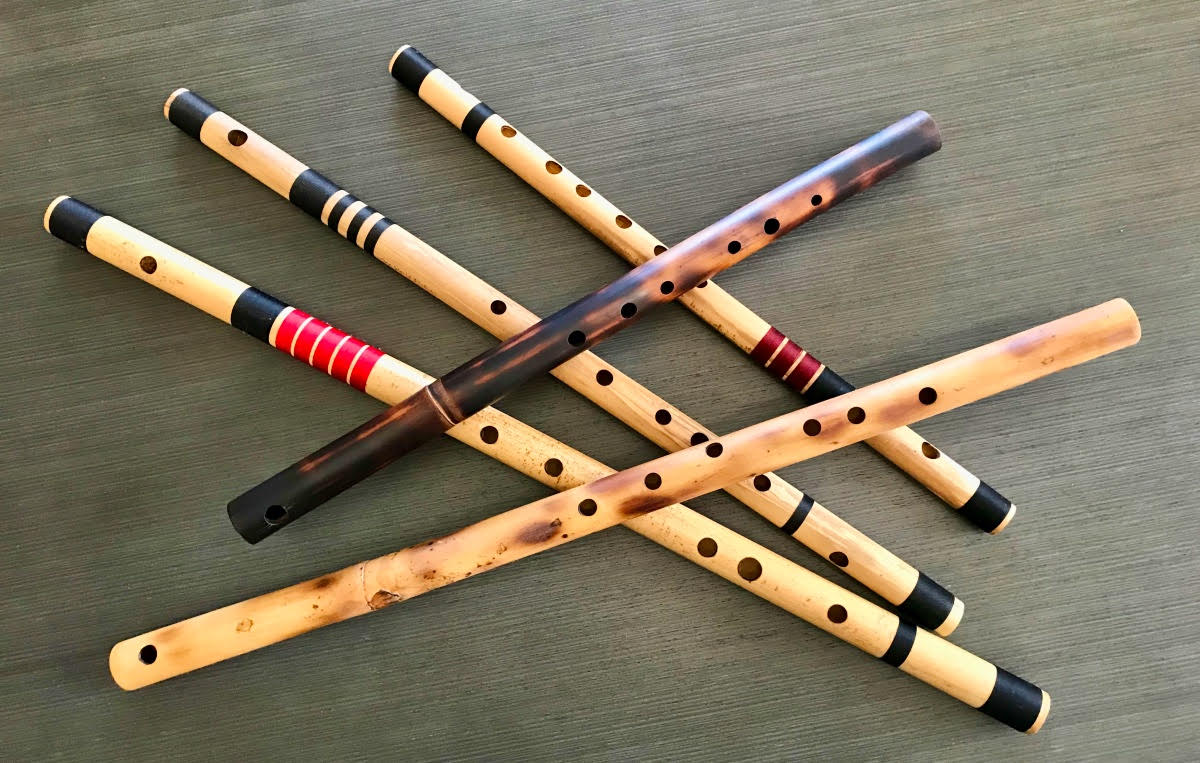People in India have been playing the Bansuri for a long time. It started as a simple flute made of bamboo, and shepherds used to play it. The sound of the Bansuri is nice and can make you feel happy and calm.
There is also a famous story about the Bansuri in Indian legends. It is said that Lord Krishna, a very loved god in Hindu stories, used to play the Bansuri. He made beautiful music that everyone loved to hear. So, when we talk about the Bansuri or legend of Bansuri instrument, we are not just talking about an instrument. We're talking about something that is a big part of India's stories and music.
What is Bansuri?
This simple flute, usually made from a piece of bamboo, has been a part of Indian life for a very long time. It is not just an instrument for professional musicians. Even people in villages and on farms have loved playing the Bansuri for many years. It is a part of everyday life for many.
The bansuri is an ancient side-blown bamboo flute originating from the Indian subcontinent. It is a popular musical instrument used in various music traditions of South Asia, particularly in India and Nepal.
What makes the Bansuri really special is how it is connected to Lord Krishna, one of the most loved gods in Hindu stories. He is often pictured with a Bansuri in his hands, playing it to make beautiful, magical music. This image has made the Bansuri a symbol of love and happiness in Indian culture.
When someone plays the Bansuri, it is not about showing off complicated music skills. It is more about making sweet, simple tunes that can make you feel peaceful and happy. That is probably why so many people in India, from kids to old folks, like the Bansuri. It is easy to make and easy to play, but the music it makes can be really special.

Lord Krishna Bansuri Name

Venu, Murali, and Vamsi According to Prabhupada's books, Krishna used three types of flutes - venu, murali, and vamsi.
Venu is a small flute around 6 inches long with 6 holes, murali is about 18 inches long with a hole at the end and 4 holes on the body, and Vamsi is the third type of flute used by Krishna.
The Bansuri, a traditional Indian flute, holds a special place in the tales of Lord Krishna and thus Lord Krishna Bansuri name is popular. In these stories, His Bansuri is not just a musical instrument; it symbolizes something much deeper. His flute, often referred to simply as 'Krishna's Bansuri,' is an iconic symbol of love and divine music.
In the lore surrounding Krishna, the sound of his Bansuri is said to have had a magical quality, attracting both the people and animals of Vrindavan, a place where he spent his childhood. The Bansuri's music represents the call of the divine, drawing everyone closer to Krishna and symbolizing the connection between the earthly and the spiritual.
Krishna's Bansuri is often depicted in art and literature, not just as a musical instrument but as an extension of his persona. It is simple yet enchanting music is seen as a metaphor for the beauty of life and the bond of love. It is a reminder of His playful and loving nature and his deep connection with nature and the universe.
In many ways, Krishna's Bansuri transcends its role as a mere musical instrument. It is a symbol of joy, love, and the divine melody that resonates within all of creation. For those who admire Krishna and his teachings, the Bansuri is more than bamboo; it is a sacred object that holds the essence of his spirit.
Who Invented The Flute in India?
In India, figuring out who exactly invented the flute is a bit of a mystery. It is because the flute is one of the oldest musical instruments and has been around for a very long time. We don't have a specific name or a person we can point to as the sole inventor of the flute in India. Instead, what we know is that the flute has evolved and changed over many centuries.
How Flute was Discovered?
The flute has always been a significant aspect of Indian culture, with the cross flute thought to have originated in India according to various accounts. Indian literature dating back to 1500 BC contains unclear references to the cross flute.
The flute has ancient roots in India, dating back to about 4000 years ago. The oldest known depiction of a flute player in India can be seen in a statuette from the Indus Valley Civilization, which dates back to around 2800–2600 BCE.
Long ago, people discovered that blowing air into a hollow tube, like bamboo, could create beautiful sounds. This simple idea was the beginning of the flute. Over time, people in India started making different kinds of flutes, experimenting with the number of holes, lengths, and materials to change the sounds they could produce.
Theobald Boehm
The most significant evolution of the flute in its entire history is attributed to Theobald Boehm (1794-1881).
Evolution of Flute or Bansuri
The flute's evolution was influenced by India's rich cultural and musical traditions. It was not just an instrument for entertainment but also played a significant role in religious and spiritual practices. In Indian mythology, flutes are often associated with divine figures, like Lord Krishna, who is famously depicted with a flute.
The classical flute, also referred to as the concert flute, is equipped with numerous holes and keys. Specifically, the Bansuri features 8 holes that can be covered and uncovered in various combinations, while the concert flute has a total of 15 holes located throughout the instrument (excluding the blow hole).
Western flutes usually have a large number of keys and mechanical components, while "Indian" flutes do not and only have open holes. Additionally, Indian flutes are typically made from wood or bamboo, whereas most Western flutes are made of metal, often silver or gold in color.
Types of Flutes in India

In India, the flute is not just one instrument but comes in various types, each with its unique sound and cultural significance. The types of flutes in India reflect the country's rich musical heritage.
Bansuri
The Bansuri is perhaps the most iconic Indian flute, made from a single bamboo shaft with six or seven finger holes. It is a key instrument in Hindustani classical music. The length of the Bansuri can vary, typically between 30 cm and 75 cm, affecting its pitch and tonal quality. Longer Bansuris produce deeper, more mellow sounds, while shorter ones have a higher, more vibrant tone. The Bansuri's association with Lord Krishna, who is often depicted playing it, adds a spiritual dimension to this instrument. It requires a delicate blowing technique and nimble finger movements, making it both challenging and rewarding to master.
Venu
Essential to the Carnatic music tradition of South India, the Venu is a transverse flute with a brighter tone compared to the Bansuri. It is usually made from bamboo and has eight holes – one for blowing and seven for finger placement. The Venu's sound is integral to the Carnatic ensemble, complementing the vocal, violin, and percussion elements. Its playing technique is complex, involving rapid finger movements and nuanced breath control, which adds a lively and expressive quality to the music.
Pullanguzhal
This is a longer version of the Venu, often used in devotional music in Tamil Nadu and other parts of South India. The Pullanguzhal is known for its deep, melodious sound, which is said to create a serene and contemplative atmosphere. It is often played in temples and during religious festivals, adding a spiritual layer to the music it produces.
Shehnai

The Shehnai is a traditional North Indian wind instrument resembling a flute but with a reed mouthpiece. It is typically made from wood with a metal flare at the end. The Shehnai has a distinctive, penetrating sound and is often played at auspicious occasions like weddings. Its music is considered to evoke a sense of joy and celebration. Ustad Bismillah Khan, a legendary Shehnai maestro, played a pivotal role in popularising this instrument across India and beyond.
Nagaswaram
This is the South Indian counterpart to the Shehnai but is larger and produces a louder, more robust sound. The Nagaswaram is a key feature in traditional South Indian weddings and temple ceremonies. Made from a type of hardwood, it has a complex fingering technique and requires strong lung power, making it an instrument of great dynamism and stamina.
Gopichand
Also known as the Ektara, the Gopichand is a one-stringed instrument often included in the category of flutes due to its similar sound production. It is used predominantly in folk music and has a simple structure – a bamboo stick attached to a resonator, usually made of coconut shell or gourd. The string is plucked while the bamboo shaft is bent, varying the tension and, thus, the pitch. The Gopichand is notable for its twangy, rhythmic sound.
Kolalu
The Kolalu is a traditional flute from Karnataka, used in folk music. Similar to the Bansuri but shorter, it produces a sweet and melodious sound. The Kolalu is often played in rural festivities and religious ceremonies, adding to the cultural richness of the region's music.
Algoza
Predominantly used in Rajasthani and Punjabi folk music, the Algoza consists of two joined beak flutes. One flute plays the melody while the other provides a drone. The player uses circular breathing techniques, making the Algoza notable for its continuous sound without breaks for breaths.
Pungi or Been
Best known for its use by snake charmers, the Pungi is a wind instrument made from a gourd with two reed pipes. The sound is haunting and nasal, and it is traditionally used in folk music, particularly in Rajasthan.
Murali
Another type of Indian flute is the Murali, which is similar to the Bansuri but usually has a shorter length. It is used in various folk traditions across India and is known for its sweet, mellow sound.
Mohan Veena
This is a modified slide guitar with additional drone and sympathetic strings, creating a sound that blends Indian classical music with a Western instrument's structure. It was invented by Pandit Vishwa Mohan Bhatt and is played with a slide, producing a sound akin to that of a flute or a stringed instrument.
Bansuri vs Sarangi
The bansuri is a type of Indian bamboo flute, while the sarangi is a bowed string instrument. Both are important traditional instruments in Indian classical music, with the bansuri associated more with North Indian music and the sarangi with the folk and classical music of Northern India and Pakistan.
The sarangi is known for its rich, resonant tone that is said to be very close to the human voice, while the bansuri has a more airy, flute-like quality. The sarangi is played with a bow, while the bansuri is played by blowing across an embouchure hole.
Both the bansuri and sarangi have deep historical roots in the Indian subcontinent, with the sarangi dating back to the 11th century and the bansuri being mentioned in ancient Hindu texts. They have been integral to various musical traditions and continue to be cherished instruments in Indian classical and folk music.
If you want to learn more about the Sarangi and the characteristics of the instrument, you can read more on the Superprof blog.
There are also several books and written resources available for learning the Bansuri. These can complement your practical training, offering deeper insights into the nuances of Bansuri playing.















